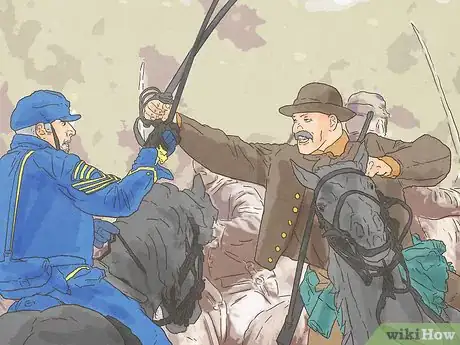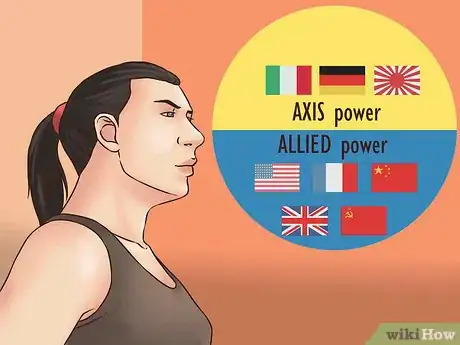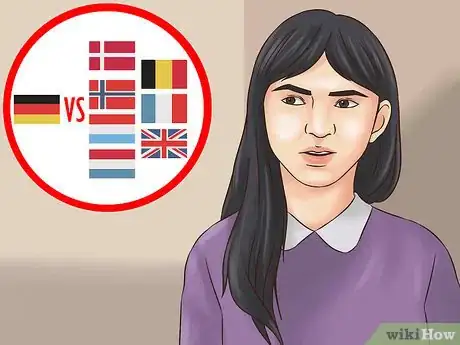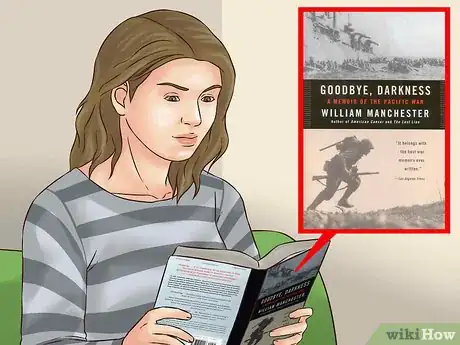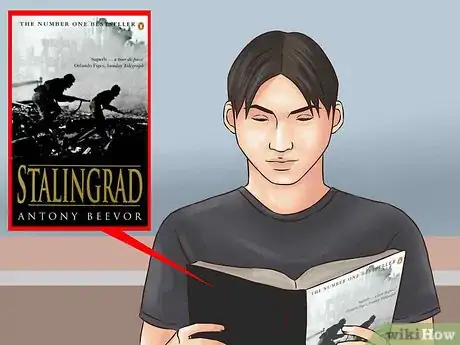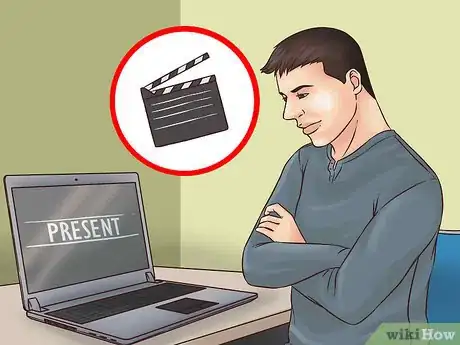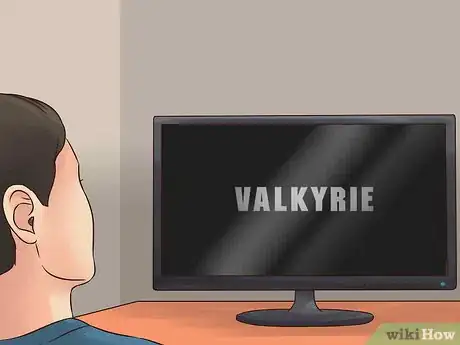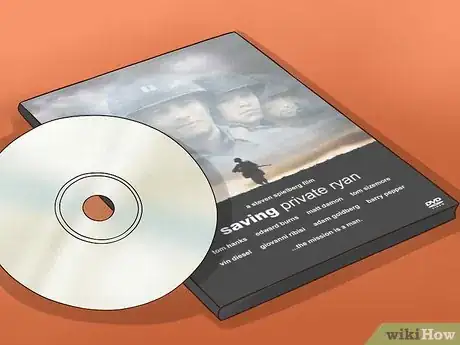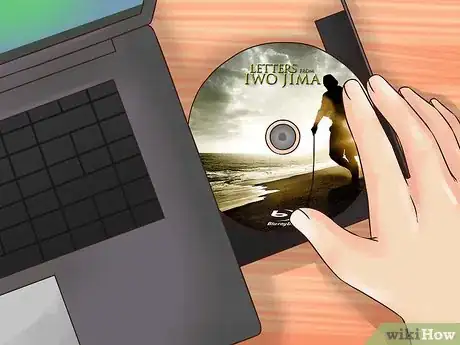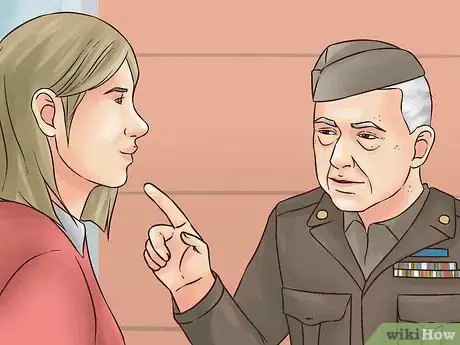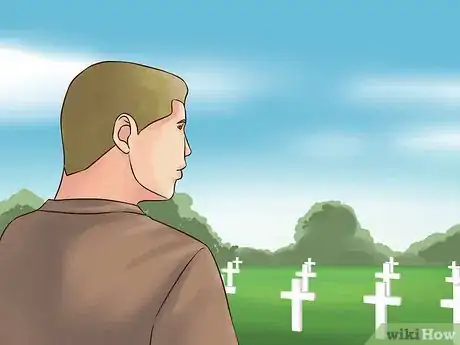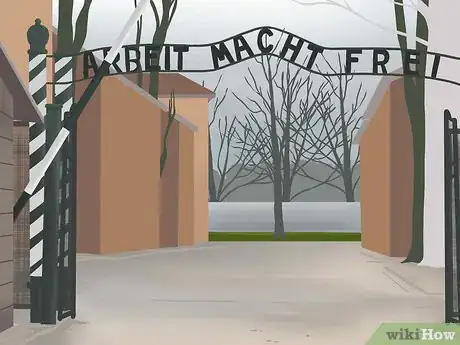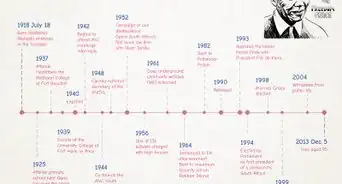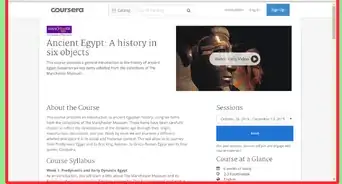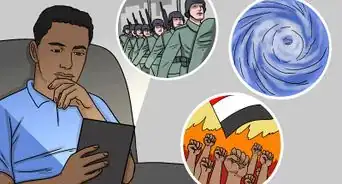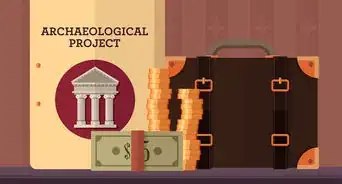This article was co-authored by Emily Listmann, MA. Emily Listmann is a private tutor in San Carlos, California. She has worked as a Social Studies Teacher, Curriculum Coordinator, and an SAT Prep Teacher. She received her MA in Education from the Stanford Graduate School of Education in 2014.
There are 19 references cited in this article, which can be found at the bottom of the page.
This article has been viewed 37,687 times.
World War II is often glorified as the "romantic war," but this is far from the truth considering it was the deadliest war in human history. Learning about history can often prove challenging, especially in our modern age of technology where misinformation is prevalent everywhere. But if you learn to look in the right places, you’ll be able to learn everything you want to know about World War II.
Steps
Knowing What to Look For
-
1Start with an overview of the war. If you’re completely unfamiliar with WWII, you should begin by reading about when the war took place, why it was called WWII, and the underlying causes of the war. You can find this basic information on sites like https://www.britannica.com/event/World-War-II and http://www.historynet.com/world-war-ii.
- For instance, you’d want to know that WWII lasted from September 1, 1939 to September 2, 1945.
-
2Study the major forces involved in the war. The major players in World War II included the Axis and the Allied Powers. These were the entities between which most of the major battles took place.[1]
- The Axis Powers included Germany, Italy, Japan, (and less significantly) Vichy France, Bulgaria, Hungary, Romania, Thailand, Finland, and Iraq.
- The Allied Powers included Britain, China, France, the Soviet Union, the United States, (and less significantly) Australia, Belgium, Brazil, Canada, Cuba, Czechoslovakia, Greece, Luxembourg, Mexico, the Netherlands, New Zealand, Norway, Poland, South Africa, and Yugoslavia.
Advertisement -
3Learn about the Eastern Front. The Eastern Front was a theatre of war that involved the most massive military endeavors in the history of the world with enormous casualties and an incredible amount of weaponry used. This confrontation involved the European Axis Powers (mainly Germany and Italy) against the Soviet Union and other Allied Powers.
- The Eastern Front was where the majority of concentration camps were located and, thus, played a major role in the Holocaust.
- The major battles fought on the Eastern Front include Stalingrad and the battles that led to the recapture of Kharkov by the Soviets.
-
4Research the Western Front. The Western Front was the site of many conflicts between Germany and other Western European countries like Denmark, Norway, Luxembourg, Belgium, France, the United Kingdom, and the Netherlands.
- The first phase of the war in the Western Front involved many of these western countries fighting Germany in attempts that culminated with the Battle of Britain.
- The second phase saw a lot of ground combat between the two sides that began with the landing in Normandy and lasted until the German defeat in 1945.
- The major battles fought on the Western Front include the Normandy D-Day landing, the Battle of the Bulge, the Battle of Britain, and the Battle of Arnhem.[2]
-
5Learn about the Pacific Theater. After the Japanese attack on American’s military bases at Pearl Harbor, the US launched a counterstrike against the Japanese who had overextended their military forces, resulting in massive air battles that usually resulted in greater losses for the Japanese than for the American Allies.[3]
- The major battles fought in the Pacific Theater included Pearl Harbor, the Battle of Midway, and the Battle of the Philippine Sea.
-
6Find out about the Holocaust. The Holocaust refers to the systematic persecution of more than 6 million Jewish people during WWII. The Nazis believed the German race to be superior to other races and therefore rounded up million of Jews, Poles, Roma, LGBTQ+ people, and disabled people. These people were either put in concentration camps with deplorable conditions or murdered outright.[4]
- Much of the information regarding the Holocaust may contain graphic information, so review these materials at your own discretion.
Learning About World War II From Books
-
1Read primary sources. Books and other primary sources are essential for gathering information. Primary sources are books, newspaper articles, diary entries, letters from soldiers, poems, etc. that are written by someone with firsthand experience about the topic. So, in this case, primary sources about WWII would be written by people who actually participated in the war in some way.[5] Keep in mind, though, the relative bias of sources because you’re usually just getting one person’s point of view. Some notable primary sources include:
- Memoirs of the Eastern Front
- A Writer at War by Vasily Grossman
- Memoirs of the Western Front
- The Second World War by Winston Churchill
- To Hell and Back by Audie Murphy (America's most decorated WWII soldier)
- Memoirs of the Pacific theater
- Goodbye, Darkness by William Manchester
- Isles of the Damned by R.V. Burgin
- Memoirs of the Eastern Front
-
2Read secondary sources. Secondary sources are written by people who don’t have firsthand knowledge of the event, but who have done extensive research on the topic. Be aware these are interpretations by people who were not necessarily there. Some notable secondary sources include:
- Eastern Front
- Berlin by Anthony Beevor
- Stalingrad by Anthony Beevor
- Western Front
- Armageddon by Max Hastings
- Overlord by Max Hastings
- Global
- The Meaning of the Second World War by Ernest Mandel
- The Origins of the Second World War by A.J.P. Taylor
- Eastern Front
-
3Check out the public library. Many public libraries contain books and encyclopedia articles that can give you a broad overview of World War II or more specific information about individual events or aspects of the war.. There is a vast array of information available in a public library. You might even stumble upon something you didn’t know you were looking for.
Learning About WWII from Films
-
1Watch films. Watching films about WWII can be a great way to learn about what happened during this time in history. Just be careful to watch movies that are historically accurate and not simply sensationalizing the past for entertainment value.
- Remember that few films are primary sources except for propaganda films.
-
2View films about the Eastern Front in WWII. The Eastern Front was one of the most volatile areas of the entire WWII conflict. Nearly half of all of the casualties from the war took place on the Eastern Front. Some examples of historically accurate films about the Eastern Front include:
- Cross of Iron (1977)
- Stalingrad (1993)
- Enemy at the Gates (2001) (Stalingrad)
- Downfall (2004) (Berlin)
- Defiance (2008)
- Valkyrie (2008)
-
3See movies about the Western Front in WWII. The Western Front consisted mostly of air warfare between Germany and Britain as well as the infamous D-Day landing in Normandy.[6] Some examples of historically accurate films about the Western Front include:
- Das Boot (1981)
- Saving Private Ryan (1998)
- The Longest Day (1962) (Invasion of Normandy)
- A Bridge Too Far (1977) (Operation Market Garden)
- Band of Brothers (2001). This is a mini-series produced by Steven Spielberg and Tom Hanks that is based on Stephen E. Ambrose's book of the same name. The series follows Easy Company, a company of paratroopers in the 101st Airborne Division, 506 Parachute Infantry Regiment, from their training in Fort Bragg to the occupation of Germany, covering scenes such as Operation Overlord (commonly known as D-Day), Operation Market Garden, the Battle of the Bulge, and Easy company capturing Hitler’s Eagle Nest.
-
4Watch movies about the Pacific theater in WWII. The Pacific theater mainly involved the conflict between Japan and the United States during World War II. This includes the attack on Pearl Harbor, the Battle of Iwo Jima, and many other crucial events in the war.[7] Some historically accurate films to watch about conflict in the Pacific include:
- The Thin Red Line (Guadalcanal)
- Flags of our Fathers (2006) (Iwo Jima)
- Letters from Iwo Jima (2006)
- The Pacific (2010). Like Band of Brothers, this is a miniseries produced by Tom Hanks and Steven Spielberg. Unlike Band of Brothers, it details the stories of soldiers of the 1st Marine Division at Guadalcanal, Cape Gloucester, Peleliu, Iwo Jima, and Okinawa and is based on three separate books. It is also an extremely accurate depiction of World War II.
Doing Other Research About World War II
-
1Interview a veteran. Talk to a veteran and get their perspective on the war. Having a conversation with a veteran could be one of the best ways for you to get information about WWII because you can get actual firsthand recollections from someone who experienced it.[8]
- If you have trouble finding a veteran to talk to, you might try attending your community’s Veteran’s Day parade. They often participate in such events.
- Alternatively, you can find interviews with WWII veterans online.
- You can also ask older relatives what their experiences were like. While not everyone went to war, those who stayed home can give you insight into what the world was like at that time. And many of them contributed to the war effort at home.
-
2Go to a museum. Many of the bigger museums pertaining to World War II are in Europe, but there are also quite a few in the United States. No matter which one you go to, there will be plenty of accurate information for you to learn about World War II. Here are some museums you might want to visit:
- The National WWII Museum of New Orleans[9]
- The Museum of World War II in Boston[10]
- The Wright Museum of World War II in Wolfeboro, New Hampshire
- The WWII Japanese American Internment Museum in McGehee, Arkansas[11]
- The Imperial War Museum in London[12]
- The D-Day Museum in Portsmouth, England[13]
- The Hiroshima Peace Memorial Museum in Hiroshima, Japan[14]
- The Bergen-Belsen Memorial in Germany
-
3Take a class at a local college. Many colleges give courses in the history department that focus exclusively on World War II. Look at the class catalogue for your college (or one in your area) and see if they offer something similar.[15]
- This is a great way to learn about WWII, especially if you are not a very good self-motivator. If you take a course, you’ll have teacher-imposed deadlines to complete your learning.
-
4Take a trip to Normandy. This is probably a step few will accomplish, but this is the best way to get a feel for what the war was like for the soldiers. Visiting the actual location of the D-Day invasion will help you visualize what happened on that day in history.
- There are also monuments, cemeteries, and memorials for you to visit near D-Day site in Normandy.[16]
-
5Visit a former concentration camp. One of the best ways to fully understand the truly devastating implications of World War II is to visit the site of a former concentration camp. It will be a powerful and moving experience to visit the actual sites of such tragic events. These sites also contain memorials and museums with plenty of information about the events that took place during the war.[17]
Warnings
- Be sure to not offend the veterans when you ask them questions.⧼thumbs_response⧽
- Remember that many war movies are rated R, so they may contain a lot of violence and bad language.⧼thumbs_response⧽
References
- ↑ http://www.nww2m.com/2011/12/allies-and-axis-whos-who-in-wwii/
- ↑ http://historylink101.com/1/world_war_II/battles_western_front.htm
- ↑ http://www.worldwar2history.info/Pacific/
- ↑ https://www.ushmm.org/wlc/en/article.php?ModuleId=10005143
- ↑ http://www.wsj.com/articles/SB10001424052748703466704575489831012445628
- ↑ https://www.britannica.com/topic/Western-Front-World-War-II
- ↑ http://www.westpoint.edu/history/sitepages/wwii%20asian%20pacific%20theater.aspx
- ↑ http://www.loc.gov/vets/questions.html
- ↑ http://www.nationalww2museum.org/
- ↑ http://museumofworldwarii.org/
- ↑ http://rohwer.astate.edu/plan-your-visit/museum/
- ↑ http://www.iwm.org.uk/visits/iwm-london
- ↑ http://www.ddaymuseum.co.uk/
- ↑ http://www.pcf.city.hiroshima.jp/top_e.html
- ↑ https://www.amherst.edu/academiclife/departments/courses/0910S/HIST/HIST-24-0910S
- ↑ http://www.musee-arromanches.fr/accueil/?lang=uk
- ↑ http://www.jewishvirtuallibrary.org/jsource/Holocaust/cctour.html
- ↑ http://auschwitz.org/en/visiting/
- ↑ http://www.buchenwald.de/en/171/
